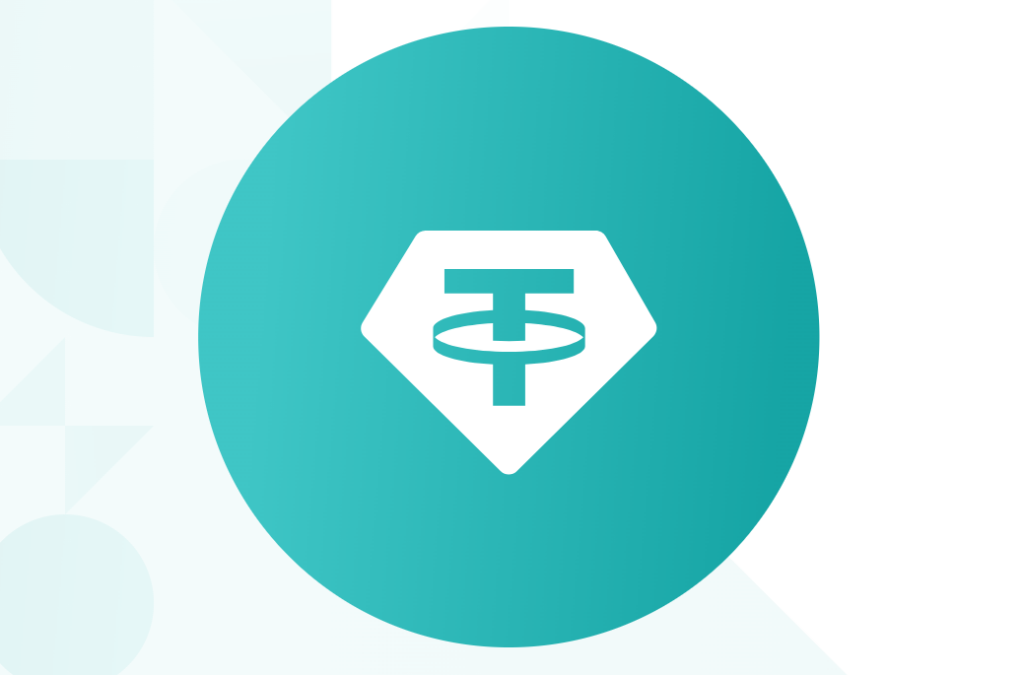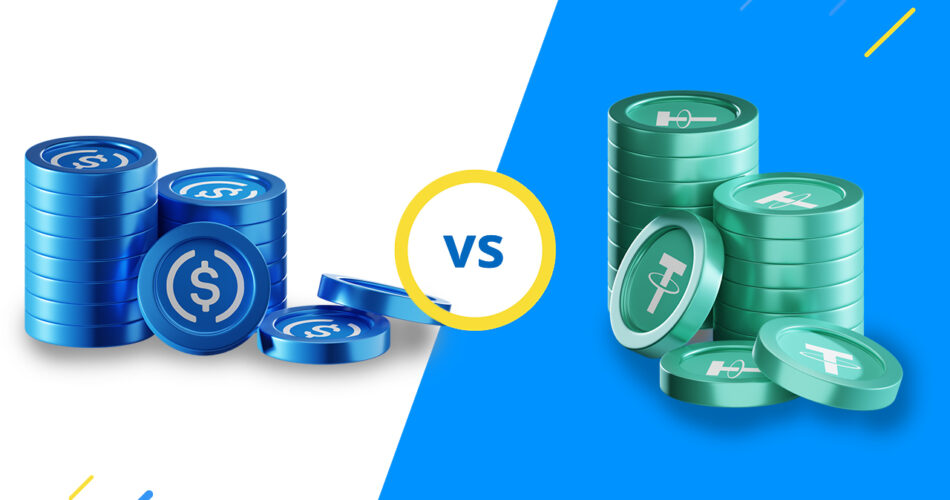In the ever-evolving world of cryptocurrencies, understanding the nuances can be a daunting task. One such nuance is the difference between USDT (Tether) and USDC (USD Coin), two of the most popular stablecoins in the market. This article will provide a comprehensive comparison of USDT vs USDC, shedding light on their unique features, use cases, and future outlook.
Table of Contents
Background Information
Brief History of Cryptocurrencies
Cryptocurrencies have come a long way since the inception of Bitcoin in 2009. The market has grown exponentially, with thousands of digital currencies now available. Among these, stablecoins have emerged as a significant category.
Explanation of Stablecoins
Stablecoins are cryptocurrencies designed to minimize price volatility. They achieve this stability by pegging their value to a reserve of assets, often fiat currencies like the US dollar. USDT and USDC are two such stablecoins.
Introduction to USDT (Tether)

USDT, or Tether, is a type of cryptocurrency known as a stablecoin. Stablecoins are digital currencies that are designed to minimize volatility by being pegged to a reserve of assets. In the case of Tether, its value is pegged to the US dollar on a 1:1 basis. This means that for every Tether token in circulation, there is an equivalent amount of USD held in reserve. This pegging mechanism provides a stable value, hence the name ‘stablecoin’.
Tether was launched in 2014 by Tether Limited, a company that is also responsible for the development of the Tether protocol. The idea behind Tether was to create a stable cryptocurrency that could be used like digital dollars. By bridging the gap between fiat currencies and cryptocurrencies, Tether has become a critical infrastructure for various operations in the crypto ecosystem.
Tether operates on several blockchain platforms, including but not limited to the Bitcoin blockchain via the Omni Layer Protocol, Ethereum as an ERC-20 token, and the Tron network as a TRC-20 token. This multi-chain approach has contributed to Tether’s widespread acceptance and high liquidity in the crypto market.
One of the key features of Tether is its stability. Since it’s pegged to the US dollar, it’s less susceptible to the extreme volatility common in the crypto market. This makes it a useful tool for traders who want to hedge against market volatility or quickly move funds between different cryptocurrencies.
Another important feature of Tether is its transparency. Tether Limited claims that its reserves are regularly audited to ensure that every USDT token is fully backed by USD reserves. However, it’s worth noting that Tether’s claims of transparency have been a subject of controversy and legal scrutiny.
Introduction to USDC (USD Coin)

USD Coin, or USDC, is a type of cryptocurrency known as a stablecoin. As with other stablecoins, USDC is designed to minimize price volatility. This is achieved by pegging its value to a stable asset, in this case, the US dollar. For every USDC token in circulation, there is an equivalent amount of USD held in reserve, maintaining a 1:1 ratio.
USDC was launched in September 2018 by the CENTRE consortium, a collaboration between the cryptocurrency companies Circle and Coinbase. The goal of USDC is to create a stable digital currency that can be used for a variety of purposes in the crypto ecosystem, such as trading, savings, lending, and payments.
One of the key features of USDC is its commitment to regulatory compliance and transparency. The reserves backing USDC are regularly audited by independent accounting firms to ensure that every USDC token is fully backed by USD reserves. This commitment to transparency and regulatory compliance has helped USDC gain trust in the crypto community.
USDC operates primarily on the Ethereum blockchain as an ERC-20 token, but it has also expanded to other blockchains like Algorand, Stellar, and Solana. This multi-chain approach has helped increase the accessibility and utility of USDC across different platforms and applications.
Like Tether, USDC provides a stable value in the often volatile crypto market, making it a useful tool for traders and investors. However, USDC stands out for its commitment to transparency and regulatory compliance, which has helped it gain a reputation as a trustworthy stablecoin.
Detailed Comparison of USDT and USDC

| Criteria | USDT (Tether) | USDC (USD Coin) |
|---|---|---|
| Market Capitalization | High | Lower than USDT |
| Liquidity | High (due to larger market cap and widespread acceptance) | Moderate (growing rapidly) |
| Stability and Price Volatility | Stable (pegged 1:1 to USD) | Stable (pegged 1:1 to USD) |
| Transparency and Trust | Moderate (some controversy and legal scrutiny) | High (regular audits and publicly available reports) |
| Regulatory Compliance | Moderate (faced criticism and legal action) | High (issued by regulated financial institutions) |
| Blockchain Technology and Interoperability | Operates on multiple blockchains (Bitcoin via Omni, Ethereum, Tron) | Operates on multiple blockchains (Primarily Ethereum, but also Algorand, Stellar, Solana) |
| Fees and Transaction Speed | Varies (generally fast with low fees, but can be higher during network congestion) | Varies (generally fast with low fees, but can be higher during network congestion) |
Market Capitalization
Market capitalization refers to the total dollar market value of a company’s outstanding shares of stock. In the context of cryptocurrencies, it’s the total value of all coins in circulation. USDT has a higher market capitalization than USDC, making it one of the largest cryptocurrencies by market cap. This high market cap contributes to USDT’s liquidity and widespread use in the crypto market.
Liquidity
Liquidity refers to how quickly a cryptocurrency can be bought or sold without affecting the market price. Due to its larger market cap and widespread acceptance, USDT generally has higher liquidity than USDC. This means that large amounts of USDT can be bought or sold more easily without causing significant price fluctuations.
Stability and Price Volatility
Both USDT and USDC are stablecoins, meaning they are designed to minimize price volatility by pegging their value to the US dollar. Both coins maintain a 1:1 ratio with the USD, providing a stable value in the often volatile crypto market.
Transparency and Trust
Transparency and trust are crucial factors in the crypto market. USDC stands out in this regard due to its commitment to regulatory compliance and transparency. The reserves backing USDC are regularly audited by independent accounting firms, and these audit reports are made publicly available. On the other hand, Tether’s claims of transparency have been a subject of controversy and legal scrutiny, leading to some concerns about trust in the crypto community.
Regulatory Compliance
Regulatory compliance is another area where USDC stands out. USDC is issued by regulated financial institutions, and the issuers are required to report their USD reserve holdings frequently. This compliance with financial regulations has helped USDC gain a reputation as a trustworthy stablecoin. In contrast, Tether has faced criticism and legal action over its transparency and regulatory practices.
Blockchain Technology and Interoperability
Both USDT and USDC operate on multiple blockchain platforms. USDT operates on the Bitcoin blockchain via the Omni Layer Protocol, Ethereum as an ERC-20 token, and the Tron network as a TRC-20 token. USDC operates primarily on the Ethereum blockchain as an ERC-20 token but has also expanded to other blockchains like Algorand, Stellar, and Solana. This multi-chain approach increases the accessibility and utility of both coins across different platforms and applications.
Fees and Transaction Speed
The fees and transaction speed for USDT and USDC can vary depending on the blockchain network used for the transaction. Generally, both coins offer fast transaction times and relatively low fees compared to traditional financial systems. However, the fees can be higher during times of network congestion, especially on the Ethereum network.
Use Cases

Use Cases for USDT
- Trading: USDT is widely used as a trading pair on cryptocurrency exchanges. Its stability makes it a useful tool for traders who want to avoid volatility when trading between different cryptocurrencies.
- Hedging: During periods of high volatility in the crypto market, investors can convert their holdings into USDT to preserve their value. This is because USDT’s value is stable, being pegged to the US dollar.
- Transactions: USDT can be used for transactions on various platforms that accept it as a form of payment. It provides a way to transact with a stable digital currency that has the same value as the US dollar.
- Cross-border transfers: USDT can be used for cross-border money transfers. It offers a fast and cost-effective way to send money across borders without the need for traditional banking systems.
Use Cases for USDC
- Trading: Like USDT, USDC is also used as a trading pair on cryptocurrency exchanges. Its stable value makes it a good option for traders.
- Savings: Some platforms offer savings accounts where you can earn interest on your USDC holdings. This is an attractive option for those who want to earn passive income on their digital assets.
- Lending: USDC can be lent out on various decentralized finance (DeFi) platforms to earn interest. This has become a popular use case with the rise of DeFi.
- Payments and remittances: USDC can be used for payments and remittances. It offers a stable and efficient way to send money globally.
- Smart contracts: As USDC is an ERC-20 token, it can be used in smart contracts on the Ethereum network. This opens up a wide range of possibilities for decentralized applications (dApps).
As you see, both USDT and USDC offer a wide range of use cases, from trading and hedging to payments and lending. The choice between the two will depend on your specific needs and the platforms you are using.
Pros and Cons
Advantages of USDT
- High Liquidity: USDT has a high market capitalization and is widely accepted in the crypto market, providing high liquidity.
- Widespread Acceptance: USDT is accepted on almost all crypto exchanges and many other platforms.
- Multi-Blockchain Support: USDT operates on multiple blockchains, increasing its accessibility and utility.
Disadvantages of USDT
- Transparency Issues: Tether has faced criticism and legal scrutiny over its claims of transparency and regulatory compliance.
- Regulatory Concerns: Tether has faced legal action from regulators, raising concerns about its future.
Advantages of USDC
- Transparency: USDC is known for its high level of transparency. Its reserves are regularly audited, and these audit reports are made publicly available.
- Regulatory Compliance: USDC is issued by regulated financial institutions, which adds to its trustworthiness.
- Multi-Blockchain Support: Like USDT, USDC also operates on multiple blockchains.
Disadvantages of USDC
- Lower Liquidity: While growing rapidly, USDC has less market penetration compared to USDT, resulting in slightly lower liquidity.
Here’s a chart summarizing the pros and cons:
| Criteria | USDT (Tether) | USDC (USD Coin) |
|---|---|---|
| Advantages | High liquidity, Widespread acceptance, Multi-blockchain support | Transparency, Regulatory compliance, Multi-blockchain support |
| Disadvantages | Transparency issues, Regulatory concerns | Lower liquidity |
How to Buy and Store
Both USDT and USDC share similarities in terms of how they can be bought and stored. They are both widely accepted on major exchanges and can be stored in various wallets that support their respective blockchain platforms.
How to Buy USDT and USDC
Both USDT and USDC are widely accepted on major cryptocurrency exchanges. This includes platforms like Binance and Coinbase, among others. To buy either of these stablecoins, you would typically need to create an account on a supported exchange, deposit funds (either fiat currency or other cryptocurrencies), and then purchase the desired stablecoin at the current market rate.
| Platform | Pros | Cons |
|---|---|---|
| MEXC | User-friendly interface, wide range of cryptocurrencies, lowest crypto exchange fees, advanced trading features | Platform may be complex for beginners, slow customer service response times |
| Binance | Large number of cryptocurrencies, advanced trading features, high liquidity, user-friendly interface | Reports of delayed customer service responses, potential target for hackers |
| Gate.io | Wide range of cryptocurrencies, advanced trading features, user-friendly interface, educational resources for beginners | Higher trading fees, does not support fiat currency deposits or withdrawals |
| OKX | Large number of cryptocurrencies, advanced trading features, competitive fees, user-friendly interface, educational resources for beginners | Reports of account freezes without prior notice, slow customer service response times |
| BingX | Advanced trading features, high leverage, ability to copy trades from successful traders, user-friendly interface | Smaller selection of cryptocurrencies, less liquidity due to smaller user base |
How to Store USDT and USDC
Once purchased, both USDT and USDC can be stored in a variety of cryptocurrency wallets. These include hardware wallets like Ledger and Trezor, as well as software wallets like MyEtherWallet, MetaMask, and Trust Wallet.
It’s important to note that the wallet must support the specific blockchain on which the stablecoin operates. For instance, if you’re storing USDT or USDC as ERC-20 tokens, the wallet must support Ethereum-based tokens.
Future Outlook
Predicted Trends for USDT
As one of the first and most established stablecoins, USDT has a significant presence in the crypto market. Its high liquidity and widespread acceptance make it a popular choice for traders and investors. As the crypto market continues to mature, it’s expected that USDT will maintain its position, especially in the trading sector.
However, Tether, the company behind USDT, has faced several legal challenges and criticisms over its transparency and regulatory practices. The future of USDT could be influenced by how these issues are resolved and how Tether adapts to increasing regulatory scrutiny in the crypto space.
Predicted Trends for USDC
USDC, while newer than USDT, has quickly gained traction in the crypto market. Its commitment to transparency and regulatory compliance has earned it a reputation as a trustworthy stablecoin. As regulatory scrutiny increases in the crypto market, USDC could potentially benefit and see increased adoption.
Furthermore, USDC’s multi-chain approach and its use in various DeFi (Decentralized Finance) applications position it well for future growth. As more goods and services are tokenized and smart contract platforms become fundamental building blocks of value exchange, USDC’s role is likely to expand.
Impact of Regulatory Changes
The future of both USDT and USDC could be significantly impacted by regulatory changes in the crypto market. Regulatory bodies around the world are paying increasing attention to cryptocurrencies, including stablecoins.
For USDT, increased regulatory scrutiny could pose challenges due to past criticisms and legal issues. For USDC, on the other hand, its commitment to regulatory compliance could be a strength in a more regulated environment.
Conclusion
In the battle of USDT vs USDC, it’s clear that both stablecoins have their unique strengths and weaknesses. While USDT leads in terms of liquidity and market penetration, USDC stands out for its transparency and regulatory compliance. As the crypto market continues to evolve, both these stablecoins are likely to play significant roles in the future of digital finance.
FAQs
What is the main difference between USDT and USDC?
The main difference lies in their transparency and regulatory compliance. USDC is known for its high level of both, while USDT has faced criticism in these areas.
Can I use USDT and USDC interchangeably?
While both are stablecoins pegged to the US dollar, their acceptance may vary across platforms. It’s always best to check the specific requirements of the platform you’re using.
Which is better, USDT or USDC?
The answer depends on your specific needs. If you prioritize liquidity and market acceptance, USDT might be better. If you value transparency and regulatory compliance, USDC could be the better choice.


